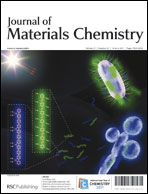Summary: Over the past decade, one-dimensional nanostructures (1D-NS) have been studied for the detection of biological molecules. These nanometre-scale materials, with diameters comparable to the size of individual biomolecules, offer the advantage of high sensitivity. In this feature article we discuss different techniques of biosensing using 1D-NS, namely electrical, electrochemical, optical, and mechanical methods, with a focus on the advancement of these techniques. Advantages and disadvantages of various synthesis and functionalization methods of 1D-NS, as well as biosensor device fabrication procedures are discussed. The main focus of this review is to demonstrate the progress of protein and DNA sensors based on 1D-NS over the past decade, and in addition we present an outlook for the future of this technology.
Biosensors Based on One-dimensional Nanostructures
